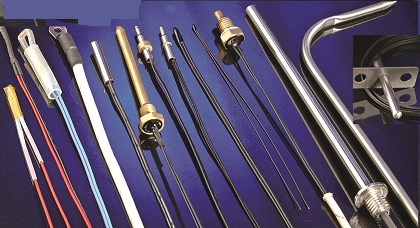How to Select Packaged Thermistor Temperature Sensor Probe Assembly ? 6 Steps

Thermistor can be assembled in housing in a variety of configurations for temperature sensing, measurement, detection, indicator, monitoring and control. Thermistor temperature sensor probe assemblies can conveniently attach to or be an integral part of any system to monitor or control temperature.
The choice of assembly is dependent on the application. The primary factors which determine the optimum configuration of a thermistor assembly are the operating environment, mounting, time response and minimum dissipation constant.
The two factors which do vary considerably with thermistor sensor probe assembly design are time constant and dissipation constant.
Both time constant and dissipation constant will vary with the selected thermistor and housing. Heat transfer properties of the housing, thermistor location, mass and wire type determine these constants.
The following items shall be specified in selecting packaged NTC thermistor temperature probe.
1. Packaged Thermistor Probe Operating Temperature Range. Minimum and Maximum Operating Temperature.
All the sensor assembly material shall be in compliance with the operating temperature requests.
2. Assembly Outlook Dimension and Probe Housing Material Cable Requests.
Reference information:
Surface temperature sensors are designed to match the contour of the surface to be sensed, whether it’s flat, curved, or round. Mounting holes or clips are often used to simplify installation of the sensor. By far the most common method
for surface measurement is the ring lug. Due to the small size of the thermistor element, it can be potted into most ring lug barrels.
Immersion temperature sensors are designed so that the sensing element will be surrounded by the medium to be sensed, often times a liquid. The sensing portion will normally protrude through a hole or orifice while a portion of the assembly will remain outside the medium to allow for the signal to be read. Immersion housings are usually threaded to allow them to be screwed into a hole or opening. Immersion part requests to be liquid and humidity prevention. For liquid applications, it’s best to use a threaded probe. Possibly, with some type of elastomeric seal like an o-ring.
The material used for the housing will be dependent upon the temperature range needed, response time, cost, and special considerations such as UL, FDA or NSF requirements in food and/or medical applications. Some of the materials available include stainless steel, copper, plastic, teflon, brass, aluminum, epoxy and heat shrinkable tubing.
3. The Sensor Temperature Measurement Accuracy Request.
4. Thermistor Resistance @25C R25 and Its Allowable R25 Resistance Tolerance, such as +-1%, +-2%,+-3%,or +-5% etc.
With an NTC thermistor, resistance decreases as the temperature rises. One main factor in determining how much resistance you need at 25°C is to calculate
how much resistance you will have at your critical temperature range.
If the total wire resistance is a substantial percentage of the resistance change at your critical temperature range, you should consider increasing your base resistance at 25°C. Determine if the resistance change at your critical temperature is large enough to compensate for any other errors in your systems design. If not, you should increase your base resistance at 25°C.
For lower temperature measurement application, such as freezer, refrigerator, generally lower Resistance NTC part such as R25 5K ohm 10K ohm part is more frequently used.
For high temperature measurement application, such as oven cooker meat probe, generally higher Resistance NTC part such as R25 100K 200K 231K ohm part is more frequently used.
5. Critical Temperature Point User Most Concerned About.
Resistance @ That Critical Temperature Point Data, or NTC Beta Value, or Other Resistance vs. Temperature RT Data.
For lower temperature measurement application, such as freezer, refrigerator, 0C 5C temperature is concerned.
For high temperature measurement application, such as oven cooker meat probe, 100C 200C temperature more concerned.
Other temperature point resistance such as 50C, 85C, more often used to calculate NTC material Beta value.
